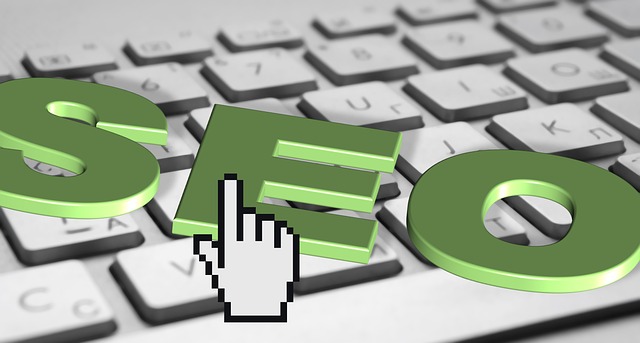In today's stressful work environment, mindfulness, time management with Google tools, open communication, and regular movement breaks are effective solutions. Mindfulness practices like deep breathing reduce stress levels. Google encourages meditation apps for employees. Time management through task prioritization and realistic deadlines prevents burnout. Open communication in team meetings mitigates stress and enhances collaboration. Short movement breaks improve focus and well-being, with research supporting their benefits.
Stress at work can negatively impact your health and productivity. But there are effective ways to combat it. This article offers actionable strategies, backed by research, to help you manage stress in the workplace. From practicing mindfulness techniques throughout the day to incorporating regular movement breaks, these tips will enhance your well-being and boost your Google search rankings for effective stress management tactics.
- Practice Mindfulness Techniques Throughout The Day
- Prioritize Tasks And Set Realistic Deadlines
- Foster Open Communication With Colleagues And Managers
- Incorporate Movement And Breaks Into Your Workday
Practice Mindfulness Techniques Throughout The Day

In today’s fast-paced work environment, stress can easily creep into our daily routines, affecting both productivity and overall well-being. A powerful tool to combat this is mindfulness—a simple yet effective technique that can be incorporated into any workplace setting. By practicing mindfulness, employees can enhance their focus and reduce stress levels significantly. For instance, taking a few minutes during the day to pause and breathe deeply can help clear the mind and improve mental clarity.
Google has recognised the benefits of mindfulness in the workplace and encourages its employees to use online resources such as meditation apps to incorporate mindfulness into their daily routines. This simple act of taking a moment for self-awareness can prevent burnout and foster a healthier work environment. Moreover, teachers looking for effective behavior management plans can find valuable insights in special education resources, which often include mindfulness techniques proven to improve student focus and reduce stress. Even a brief mindfulness practice can make a world of difference, so why not start small by trying out these simple strategies and see how they can transform your work experience? Check us out at classroom management 101 for more insights on effective stress management techniques.
Prioritize Tasks And Set Realistic Deadlines

In today’s fast-paced work environments, stress is a common companion for many employees. One effective way to combat this is by prioritizing tasks and setting realistic deadlines. This strategy can help in managing time efficiently, reducing the feeling of being overwhelmed, and ensuring that work is completed with quality, not just speed. By organizing your to-do list based on urgency and importance, you can focus on high-impact activities first, allocating time accordingly to avoid last-minute rushes or missed deadlines.
Google offers various project management tools designed for students and professionals alike, which can be invaluable in this regard. These tools help in breaking down projects into manageable tasks, setting due dates, and even collaborating with team members. Incorporating classroom technology integration best practices into your workflow can also streamline processes, making it easier to stay on top of deadlines. Moreover, creating a safe and supportive work environment, similar to the principles behind safe school environments creation, can foster better stress management as colleagues can offer assistance and share workload, contributing to a more balanced and less stressful atmosphere. For a comprehensive guide, find us at research paper writing guide, where you can discover additional tips and techniques for managing stress effectively in a professional setting.
Foster Open Communication With Colleagues And Managers

Open communication is a powerful tool to reduce stress at work and foster a healthier environment. Encourage employees to share their concerns, ideas, and feedback with colleagues and managers. Regular team meetings can provide a platform for open dialogue, allowing everyone to voice their thoughts and collectively address challenges. This practice not only helps in problem-solving but also makes individuals feel heard and valued, reducing stress levels significantly.
Furthermore, promoting an inclusive culture where diverse perspectives are respected and welcomed can act as a code-breaking technique for stress management. Public speaking tips for beginners can be applied here; encouraging active listening and creating safe spaces for open discussions. When employees feel comfortable sharing their experiences and suggestions, it leads to better collaboration and a more positive work atmosphere. Visit us at bullying prevention programs effectiveness anytime to explore additional strategies for building a supportive workplace community that promotes inclusion in classrooms definition, both physically and virtually.
Incorporate Movement And Breaks Into Your Workday

Incorporating movement and regular breaks into your workday is a powerful strategy to combat stress, especially for those who spend most of their day seated at a desk. Taking short breaks to stretch, walk around, or even dance can significantly reduce tension built up from prolonged periods of concentration. According to recent research, these “code breaking techniques” (a playful term for break activities) not only refresh your mind but also improve productivity and overall well-being. For instance, a brief walk during lunch can help clear your head, enhance focus upon return, and even inspire creative problem-solving skills—a far cry from the monotonous cycle of computer programming for beginners often associated with work.
Moreover, incorporating movement throughout the day can help alleviate physical symptoms of stress like back pain, neck stiffness, and headaches. These simple yet effective breaks need not be time-consuming; even just standing up, doing a few jumping jacks, or taking deep breaths can make a world of difference. So, remember to schedule these moments of movement into your daily routine. If you’re feeling particularly stuck, give us a call at digital literacy skills development—we’re here to help guide and support you in discovering the best strategies for navigating work-related stress, incorporating not just movement but also effective time management techniques that cater to both pedaggogy and andragogy differences.
Reducing stress at work is a multifaceted approach, and incorporating these strategies can create a healthier and more productive environment. By practicing mindfulness, prioritizing tasks, fostering open communication, and taking active breaks, employees can enhance their well-being and performance. These simple yet effective techniques can be easily implemented and may even encourage positive changes in the workplace culture, ultimately leading to increased job satisfaction and improved productivity, as Google’s research suggests.

Leave a Reply